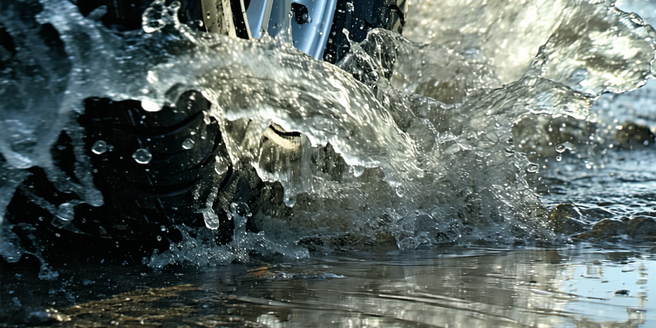
Understanding the Challenges of Wet Weather Driving
Driving in the rain significantly increases road hazards due to reduced visibility and slippery surfaces. Water on the road creates a barrier between tires and asphalt, leading to challenges such as hydroplaning. Drivers need to exercise caution as stopping distances increase and reduced traction makes cornering trickier. Moreover, rain can obscure road markings and signs, making navigation challenging even on familiar routes. It’s essential to maintain a safe following distance to accommodate sudden stops. It’s crucial for drivers to remain vigilant and adapt their driving style to meet these wet weather challenges. Additionally, keeping headlights on improves visibility for both the driver and other road users. Awareness of high-risk areas, like intersections and curves, where water accumulation is common, can help prevent accidents.
Preparing Your Vehicle for Rainy Conditions
Ensuring your vehicle is in optimal condition can greatly reduce the risks of wet weather driving. Start with checking tire tread as adequate tread depth helps combat hydroplaning. It’s also wise to ensure that your tires are properly inflated to maximize traction on wet surfaces. Remember, regular maintenance checks can go a long way in preventing unexpected issues. Windshield wipers should be in good working order to maintain visibility, while headlights and taillights must be functioning to ensure you can see and be seen. It’s also beneficial to keep a check on brakes because responsive braking can be a lifesaver in emergencies. Lastly, ensure that your vehicle’s defrosters are working to prevent fog build-up on windows, which can significantly impair visibility.
Effective Communication and Signals on Wet Roads
Communication and signaling are critical skills when navigating wet roads to prevent misunderstandings that could lead to accidents. Proper use of indicators for lane changes and turns is essential, as wet conditions may result in late reactions from other drivers. Hazards like sudden braking should be communicated in advance through gentle braking to illuminate brake lights and warn vehicles at the rear. In such conditions, maintaining a safe following distance becomes even more crucial. Flashing reverse lights in a mist-laden environment might also alert others of your presence, enhancing overall road safety. It is important to remain vigilant and adjust your speed according to the road conditions to avoid potential dangers. Engaging in mindful communication with other drivers fosters a safer driving environment.
Adjusting Speed and Following Distance in Rain
In wet conditions, it’s essential to adjust your speed and increase following distance to ensure safety. Wet roads require longer stopping distances, hence maintaining a greater buffer between vehicles helps avoid rear-end collisions. Reducing speed not only gives more time to react but also decreases the likelihood of hydroplaning. In addition, ensuring that your vehicle’s tires are in good condition can significantly improve traction on slippery surfaces. Regularly checking tire tread depth can be a vital part of vehicle maintenance. The recommended following distance should be doubled in rainy weather to allow for adequate reaction time. It’s crucial to stay within safe speed limits and avoid overtaking in such conditions, contributing to overall road safety.
Navigating Puddles and Flooded Sections Safely
Approaching puddles and flooded areas requires caution to prevent vehicle damage or loss of control. Slow down when nearing puddles to assess their depth, as hitting deep water at speed can lead to hydroplaning or water ingress into the engine. Weather conditions can quickly change the situation, adding unpredictability to flooded areas. Water can conceal hidden obstacles and hazards that can be damaging to your vehicle. Avoid driving through standing water if unsure of the depth. Should navigating through be unavoidable, proceed slowly in the middle of the road as water tends to be shallower there. Stay alert for oncoming traffic splashes that could impair visibility. Should the vehicle stall in water, abandon it and seek higher ground immediately for safety.
